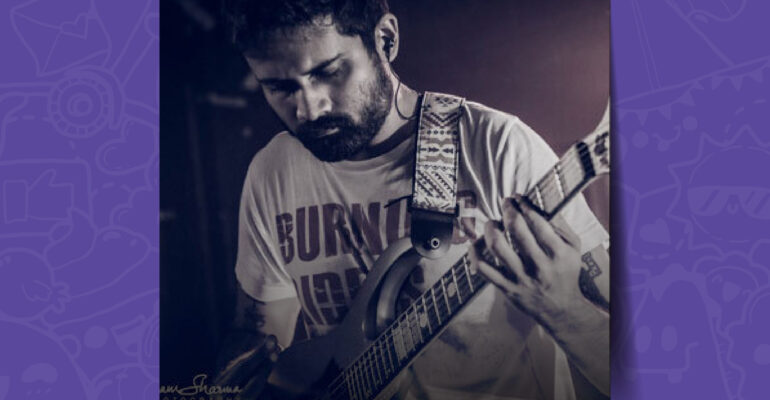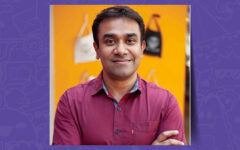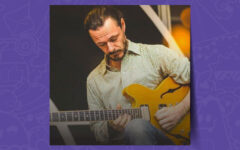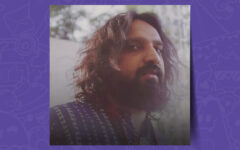The lure of the Indian audio industry
2024-07-23 9:40The lure of the Indian audio industry
Tejas Narayan is a Mumbai-based engineer, educator and musician renowned for his recording & mixing expertise on Ads, TV shows, and countless independent artists. Beyond his 8 years of operating his recording studio, he briefly delved into the world of live sound before joining Vijaybhoomi University as a Professor. Tejas is also the guitarist for instrumental-metal band, Letterz.
If you’ve attended any of the large music festivals in this country recently, you may have noticed the excellent quality of production they deliver. From the fantastic light arrays to the detailed audio quality, festivals have been upping their game for the last 10 years.
The same goes for the incredibly detailed mixes that solo musicians and bands have been releasing in the same time frame. With access to cheap and varied software and hardware even so-called bedroom producers have raised the bar, whether it be for an Instagram reel or a music score for an independent film.
Bollywood is no exception to this change. There has been a massive shift from the traditional arrangements of songs, with the usual elements of a dhol, one or two melodic instruments and the lead vocal being now accompanied by a vast array of virtual instruments, live drum recordings and synthesizers.
The last 10 to 15 years in the audio industry have seen great progress and rapid developments. This can be attributed to a recent surge in the availability of state-of-the-art sound equipment and shifting mindsets. I spoke to three industry professionals from the sub-domains of live sound, studios and film mixing to get a pulse on the current state of this arena and its possibilities for anyone interested in audio as a profession in India.
The Rush of Live Sound
Live sound deals with all aspects of delivering sound for a concert or event be it indoor or outdoor. This can mean anything from setting up stage requirements of an artist to tuning the PA system and all its peripheral equipment to following health & safety protocols and finally mixing the audio live for an audience or broadcast stream.
Sigmund Quadros has been working in live sound for the past 15 years as a freelance mixing engineer having worked with artists like Shilpa Rao, Kanishk Seth, Luke Kenny, Band of Boys and Sherrin Varghese.
It’s the live aspect that he finds the most challenging and rewarding element in his job. “In a studio you may get 16 hours to mix one song, here (live shows) you get a two hour sound check if you’re lucky and a one-and-a-half-hour show. You have to get it right…it’s a little unforgiving. You can change something the next day (in a studio) but for a live show you have only one shot. But delivering your artists sound to an audience of 10,000 people, while they’re screaming those songs back at you…it’s quite a high.”
In the early days of live sound in India, mixing engineers didn’t necessarily have a musical ear, they were more concerned about the basics like making sure there’s no noise in a microphone or if all the equipment was connected properly. Today’s engineers are far more knowledgeable and aware of what an audience wants.
“There’s been a positive shift in terms of technology, equipment and sensibilities. In the old days we’d try to get as close to the sound of an artist as their published songs…but it didn’t work. Not that they did a bad job…but they only knew the basics and didn’t have a way to improve their training. Nowadays good engineers can get the same sound as a released track. Engineers today do their homework…most of them play an instrument and it really helps when engineering a show.”
When it comes to working with new entrants into the high-stress field of live engineering, “Skills, knowledge…that will eventually come. But what I look for in the younger generation is intent and drive. You have to want to deliver a show. This is no place for someone who just wants to “try it out”.”
In the Studio
Jehangir Jehangir (JJ) founded Island City Studios, Mumbai in 2017, a versatile studio that has an Atmos postproduction suite as well as jam rooms for bands and everything in between. The studio has been the birthplace of creation for artists like Raghav, Tejas Menon, Divine, Amit Trivedi, Gino Banks, Mohini Dey, Ankur Tiwari and Shankar-Ehsaan-Loy.
Studio work can involve recording a voice-over for a TV ad, recording instruments or vocals for a feature song, mixing and remixing songs for commercial release. Even the composition and arrangement of music gets finalised in the control room of a studio. Besides the usual projects like a Bollywood film, an advertisement or an album, the work these days may also cover things like recording podcasts, live-streaming a band performance or upmixing already released music into modern surround sound formats.
And it’s because of this varied range that studio engineers are expected to have a large database of knowledge. “In the old days if you wanted to learn from one of the great mixing engineers, you’d have to go meet them and hope you get an internship slot. However, nowadays great engineers are sharing their knowledge on the internet. Their techniques have become more accessible to people. I feel that because of this information the gap (to western countries) has reduced, but I think we still have some way to go.”
“It’s the experimentation and the breaking of boundaries that we need to get better at. Some of the experimentation that they’re doing in the west to arrive at techniques is where the cool stuff is really going on. Instead of making do with “what will work”, I think bringing out the character and vibe of a song is what we should probably be looking at. And I think it’s slightly easier to reach that end goal these days.”
Unlike Sigmund who doesn’t mind training newcomers as they progress through the job, JJ prefers that his new employees have at least a degree in sound engineering before they apply. “When you work in a commercial studio there is an expectation of quality and releasing a product that meets industry standards is a minimum requirement. If they don’t have an understanding of how a studio operates or lacks the fundamentals of sound engineering, it becomes impossible to hire them. A trained engineer, even a young one, would be easier to integrate into a studio.” says JJ.
Working In Film Audio
A 30 year veteran of the Indian film industry, Baylon Fonseca is a skilled sound designer and mixer. He has worked on films like, “Wake Up Sid”, “Luck By Chance”, “Shootout At Lokhandwala”, “Raees”, “Zindagi Na Milegi Dobara” and many more.
“The good thing (about the film industry) is the embracing of technology.” The default format for mixing films used to be stereo. Studios then shifted to surround formats quite quickly, internationally as well as domesticly. “We leap frogged the technology quite a bit. Whether it was 6-track magnetic for Sholay, Quadraphonic sound or Dolby Surround, we experimented with the technology quite a bit.” India’s first film to have sound, “Alam Ara”, was released a mere 4 years after that barrier was broken in 1927 by “The Jazz Singer”
“The downside is that we haven’t yet mastered the art.” says Baylon. A lot of us forget that working in the audio industry is an artform. You obviously need to have the technical knowledge to operate mixing consoles, outboard equipment or audio softwares, but you have to be equally comfortable with thinking creatively and a willingness to experiment.
The work of musicians move us all. That’s only because a mixing engineer somewhere poured their heart and soul into bringing out that musician’s ideas and emotions. With the introduction of 3D audio formats like Dolby Atmos, engineers have even more scope to explore new ideas and new ways of immersing an audience into the story.
“Jurrasic Park (the first movie to utilise the DTS sound format) drove me to find out how I could get a better mix. The immersion of the audience, rather than the loudness of multiple channels, is important to understand.”
This requirement of a detail-oriented focus, both from a technical and creative aspect, whether it be live sound, film audio or studio work, means that only a few people are cut out for the job, and they are in dire need right now.
For the ones who have a keen interest but lack the skills, they may not know what they don’t know. “One of the most inadequate answers to the question, “Have you watched this film? Have you read this book?, is “No”. Like a musician, you have to listen to a varied number of performances. You may have a specific interest, but how do you expand outwards if you’re not listening and observing current trends. That’s why learning in this field never ends. Even someone with no background in sound must at least have an intense love of film, then someone like me can teach them.”
Related Posts
Where Do All the Songs Come From?
Search
Popular Tags
Popular tags







